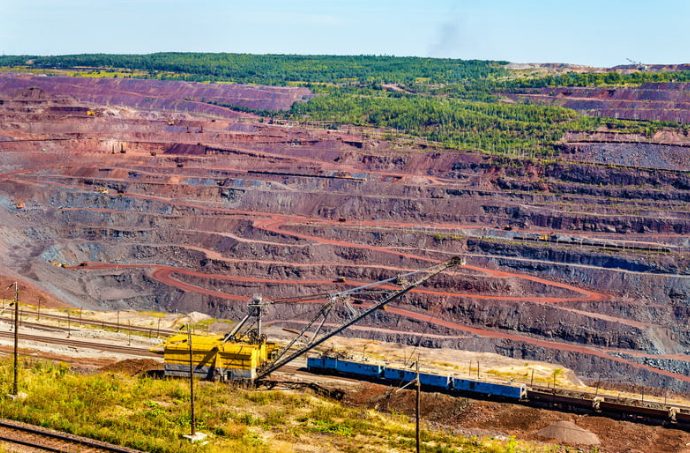
by DGR News Service | Nov 10, 2023 | Climate Change, Mining & Drilling, NEWS, The Problem: Civilization
Editor’s note: As we see in this article, published on 10/24/2023 by Investigate Europe you can find on their website www.investigate-europe.eu, the European Union abandons it’s own environmental standards when it comes to pursuing geopolitical interests in remote places.
In July of 2023 the European Parliament voted for the EU restoration law so that a part of the 80 percent of natural habitats already damaged can be rewilded. But the implementation of this law can only make an impact if Europe decreases it’s use of metals and minerals from mining, outside and inside of it’s borders.
With importing “critical” metals from Russia the EU supports a war that displaces millions of people and harms wild habitats. These double standards, imposing sanctions on Moscow yet at the same time profiting off of the rich “resources” Russia provides, shows how modern societies work: governments and industries must firstly attend upon their high energy demand, ethical and environmental standards are at the bottom of the list.
Could it be the reason for this is not in spite of a defence against the attacker but because of it: The land of the enemy should be used to the benefit of the one who is in the “right” until it is drained of it’s “resources”. Like an outlawed person bereaved of rights and dignity. This dangerous attitude unfolds in front of our eyes: a competition where the living planet can only loose.
By Pascal Hansens, Sigrid Melchior, Maxense Peigné, Harald Schumann / Investigate Europe
Since Russia’s invasion of Ukraine in February 2022, the 27 EU countries have adopted 11 sanction packages, targeting raw materials including oil, coal, steel and timber. But minerals that the EU considers as “critical” raw materials – 34 in total – still flow freely from Russia to Europe in vast quantities, providing crucial funds to state enterprises and oligarch-owned businesses.
While some of its western allies have targeted Russia’s mining sector – the UK recently banned Russian copper, aluminium and nickel – the EU has continued its imports. Airbus and other European companies are still buying titanium, nickel, and other commodities from firms close to the Kremlin more than a year after the invasion, Investigate Europe can reveal.
Between March 2022 and July this year, Europe imported €13.7 billion worth of critical raw materials from Russia, data from Eurostat and the EU’s Joint Research Centre shows. More than €3.7 billion arrived between January and July 2023, including €1.2 billion of nickel. The European Policy Centre estimates that up to 90 per cent of some types of nickel used in Europe comes from Russian suppliers.
“Why are critical raw materials not banned? Because they are critical, right. Let’s be honest,” the EU’s special envoy for sanctions, David O’Sullivan, pithily said at a September conference.
The Union is desperate for critical raw materials to achieve its aim of climate neutrality by 2050. These commodities are crucial for electronics, solar panels and electric cars, but also for traditional industries like aerospace and defence. Yet they are all too often in scarce supply, unevenly available across the globe, and in high demand.
“The war in Ukraine has clearly shown the willingness of Russia to weaponise the supply of key resources. As Europeans, we cannot tolerate that,” says Henrike Hahn, a German Green MEP working on the new Critical Raw Materials Act.
Europe’s imports not only fund Russia’s war economy, but also benefit Kremlin-backed oligarchs and state companies. Although the EU has targeted some shareholders, Russia’s mining businesses have faced no restrictions. The loophole is even more glaring that the US and the UK sanctioned several firms directly, further isolating the EU in its double standards.
Analysis of Russian customs data shows that Vsmpo-Avisma, the world’s largest titanium producer, sold at least $308 million of titanium into the EU via its German and UK branches between February 2022 and July 2023. It is part-owned by Russia’s national defence conglomerate, Rostec. The two companies share the same chairman: Sergei Chemezov, a close Putin ally. The pair were KGB officers in East Germany in the 1980s.
Both Chemezov and Rostec are under EU sanctions and helped supply tanks and weapons to the Russian army. Brussels has not sanctioned Vsmpo-Avisma directly, but the US did ban exports to the firm on 27 September, saying it was “directly involved in producing and manufacturing titanium and metal products for the Russian military and security services.”
Among Vsmpo-Avisma’s largest European customers is Airbus, the aerospace giant partly owned by the French, German and Spanish states. Between the start of the war and March 2023, Airbus imported at least $22.8 million worth of titanium from Russia; a fourfold increase in value and tonnes compared to the previous 13 months.
From 14 March 2023, Vsmpo-Avisma stopped identifying buyers in customs filings but nothing indicates a significant change in trends. Titanium imports to France only slightly decreased between then and July 2023, and Airbus still listed the company as a supplier in July.
“We have no comment on the details and evolution of our titanium sourcing volumes,” an Airbus spokesperson said. “Generally speaking, Airbus is currently ramping up commercial aircraft production and this is having a mechanical impact on its overall procurement volumes.” Even though it will take time, the group is reducing its dependency on Russia, the spokesperson said, adding that a ban on Russian titanium for civil aviation would “encourage the Russian industry to focus on defence needs.”
Unlike Vsmpo-Avisma, other Russian companies have avoided naming their buyers in customs filings altogether. Yet the data still gives a scale of their fruitful relationship with the west. Nornickel, the world leader in palladium and high-grade nickel, exported $7.6 billion worth of nickel and copper into the EU via Finnish and Swiss subsidiaries between the start of the war and July 2023. It also sent over $3 billion of palladium, platinum and rhodium into Zurich airport. In 2022, almost 50 per cent of Nornickel’s sales went to Europe. Brussels has not sanctioned the group nor its chairman and largest shareholder, Vladimir Potanin, an oligarch and former deputy prime minister under US and UK sanctions.
Aluminium giant Rusal also uses tax havens to funnel minerals to Europe, where it owns the EU’s largest alumina refinery in Ireland and a smelter in Sweden. Its Jersey and Swiss-based trading houses brought at least $2.6 billion of aluminium into the bloc in the 16 months following the invasion of Ukraine. In August 2023, Rusal said Europe still accounted for a third of its revenues. Rusal’s main shareholder is oligarch Oleg Deripaska, sanctioned by the EU and its western partners.
Anti-corruption NGO Transparency International says it does not make sense that the sector has avoided sanctions given the known links.
“They are part of the system and fueling Putin’s war,” says senior policy officer Roland Papp. “So it’s perfectly logical to ban those critical raw materials from Russia, as we did for other sectors and goods.”
Since the start of the war, other European buyers of Russian metals have included Germany’s GGP Metal Powder ($66 million of copper), French arms-maker Safran ($25 million of titanium) and Greece’s Elval Halcor ($13 million of aluminium). Dutch logistics firm C. Steinweg also handled at least $100 million of various critical metals on behalf of its customers.
Safran confirmed they are still buying titanium from Vsmpo-Avismo but are working to reduce their Russia purchases. GGP Metal Powder said “there is no real alternative to our supplier from Russia“. C. Steinweg said they follow all rules and sanctions. Elval Halcor, Vsmpo-Avisma, Rusal and Nornickel did not reply to requests for comment.
At the start of the war, Europe was relying on Russian producers for 30 per cent of its nickel, 35 per cent of its alumina and 15 per cent of its aluminium, according to an internal memo by trade body Eurometaux seen by IE. Russia accounted for 41 per cent of the world’s palladium production, and up to 25 per cent of its vanadium output.
“Russia occupies a large part of Eurasia – it possesses a big part of the strategic reserves of critical raw materials, on par with China,” says Oleg Savytskyi from Razom We Stand, a Ukrainian NGO. Moreover, “the low density of the population, authoritarian control and practical absence of environmental and human rights protections made investments in the mining of Russia’s resources terribly attractive,” he adds.
The EU’s crippling dependency should have been curbed earlier, argues Transparency International’s Papp. “We’ve had enough time to react. The annexation of Crimea dates back to 2014, the invasion of Georgia even dates back to 2008 15 years ago! And what have we done? We’ve increased our dependence on Russia. It was an absolute and serious mistake.”
A Polish diplomat said Poland has pressed the EU to “decouple completely” from Russia in several areas, “but for the sake of unity and efficiency in adopting new sanctions packages we have agreed to postpone particular measures until further discussion.”
As EU sanctions require unanimity among all member states, divergent national economic interests can often water down packages. When the ninth set of sanctions banned fresh investments in Russia’s mining sector in December 2022, it included an exemption to invest in some mining activities for some critical raw materials. As a result, European companies can still pour cash into Russian mines to extract nickel, titanium and other key metals.
The European Commission won’t publicly comment on whether or not it has proposed a ban on critical raw materials. One reason could be that “sanctions are carefully designed to hit their targets while preserving EU interests,“ an EU source told IE.
Weaning the EU off Russia’s critical and strategic materials will be difficult. Replacing suppliers and forging new international partnerships is an arduous process. Finding a raw material, such as titanium or copper, with a similar quality and price of those from Russia is also a challenge.
Imposing tariffs or severing ties too quickly could lead to a global price surge which would harm European buyers while benefiting Moscow. A ban could also prompt India, Iran, and China to intensify purchases, further depleting critical raw material resources for EU industries.
Tymofiy Mylovanov, president of the Kyiv School of Economics, says a ban would be difficult to implement given global demand challenges and Europe’s reliance on Russia. “Overall, with these specific materials, the monetary value of what Russia would lose from the EU import ban, might be smaller than the effect on the EU production,” says Ukraine’s former trade and economic development minister.
UN trading data shows that while EU imports of Russian copper, nickel and aluminium imports have declined in the past two years, nickel and aluminium revenues remained stable. Russia’s nickel sales to the EU were worth $1 billion in the first half of 2021 and were $1.1 billion two years later.
The Union is now trying to reduce its dependency. In March, the European Commission presented its Critical Raw Materials Act (CRMA), a new legislation aimed at reducing EU dependency on third countries for critical raw materials.
“War in Europe is a risk which was not present in the last decades and Russia was known as a reliable supplier,” says German MEP Hildegard Bentele, shadow rapporteur on the CRMA at the European Parliament. “The EU should take immediate action to support European companies to decrease and replace their CRM deliveries from Russia as soon as possible.”
The High Representative of the Union for Foreign Affairs and Security Policy is expected to propose a 12th package of sanctions in the coming weeks, which will be then discussed by member states. Brussels hopes the package will renew pressure on the Russian economy and sap its fighting strength on the battlefields of Ukraine. Restrictions on critical raw materials does not seem to be on the table.
Editor at IE: Chris Matthews
Featured image: Leonid Andronov via Canva.com
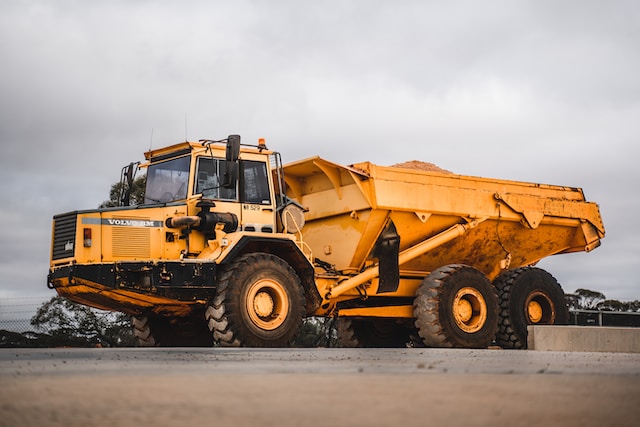
by DGR News Service | Jun 5, 2023 | ACTION, Mining & Drilling
Editor’s Note: Any alternative to fossil fuel is embraced as “green.” These include the so-called alternatives that require the destruction of the natural world on par with the destruction by fossil fuel. DGR has always stood against these false solutions. Instead, we stand with the real solutions, i.e. a complete halting of the industrial civilization and a return to a regenerative system.
The following article is written by Arno, and was originally published on the DGR France website. It is translated by Benja. It discusses the damage done by lithium mining, a core element of batteries for electronics, including electric cars.
By Arno/DGR France (Translated by Benja)
Focused on the fight against climate change, most environmental movements forget about other ongoing environmental disasters that are just as important, if not more so. One of the most serious is undoubtedly the destruction of biodiversity. Worse, in their frantic race to stop climate change – or rather in their frantic race to find alternative energies to carbon-based energies, and thus maintain the standard of living of Westerners and ensure the good health of the industrial machine in a context of climate change – they are doing everything to initiate an energy transition by promoting the development of so-called “green” energies, which are however very damaging to the planet.

Two weeks ago, DGR France was on the site where a lithium mine is planned to create the batteries that are essential for the operation of machines powered by “green” energy. This would be a local extraction, which would also allow France to be less dependent on distant imports. In short, from the point of view of environmentalists, it is a double victory.
However, there is nothing to celebrate. The site in question is a magnificent old forest, of which nearly a hundred hectares will have to be logged for the installation of the mine. What’s more, this forest is located in the Puy-de-Dôme, the water tower of France. From this forest flow many rivers that feed the region, springs and wells. In summer, when the rivers are almost dry, which is increasingly common with climate change, the water table replenishes the rivers so that they never run dry, allowing the maintenance of aquatic life. Unfortunately, by digging deep to extract the rock (granite), the water table will drop below the level of the rivers. In summer, the water table will not be able to feed the rivers. Worse, it is the rivers, who’s level is already very low, that will end up emptying themselves into the water table.

But that’s not all. Lithium is found in a specific rock, mica, which makes up 0.5% of granite. The mine will therefore extract phenomenal quantities of granite to reduce it to powder in order to get its hands on the mica. To do this, the operator will build huge basins in which the granite will be mixed with thousands of liters of chemicals to isolate the mica. The mica, once recovered, will be sent with water in a pipeline, whose implementation will ravage other natural areas of the region, to end up in a second plant that will be created for the occasion. The mica will then be immersed in very powerful baths of acids and bases, at very high temperatures, to finally obtain the precious lithium. It goes without saying that these on-site operations will consume phenomenal quantities of water, which will be pumped directly back into the aquifer, or at least what is left of it
Once you’ve taken the mica, you’re left with the rest of the granite, 95.5% of the chemical-soaked rock, which will then be put back underground. For centuries to come, rainwater will seep through this mine waste and be laced with arsenic, heavy metals and other chemicals used in the settling process, which will end up in the region’s waterways. That’s what a mine is. That’s why the US Environmental Protection Agency (EPA) ranks water contamination from mining activity as one of the top 3 threats to the world’s ecological security. And it’s not like we’re running out of water in France because of droughts…
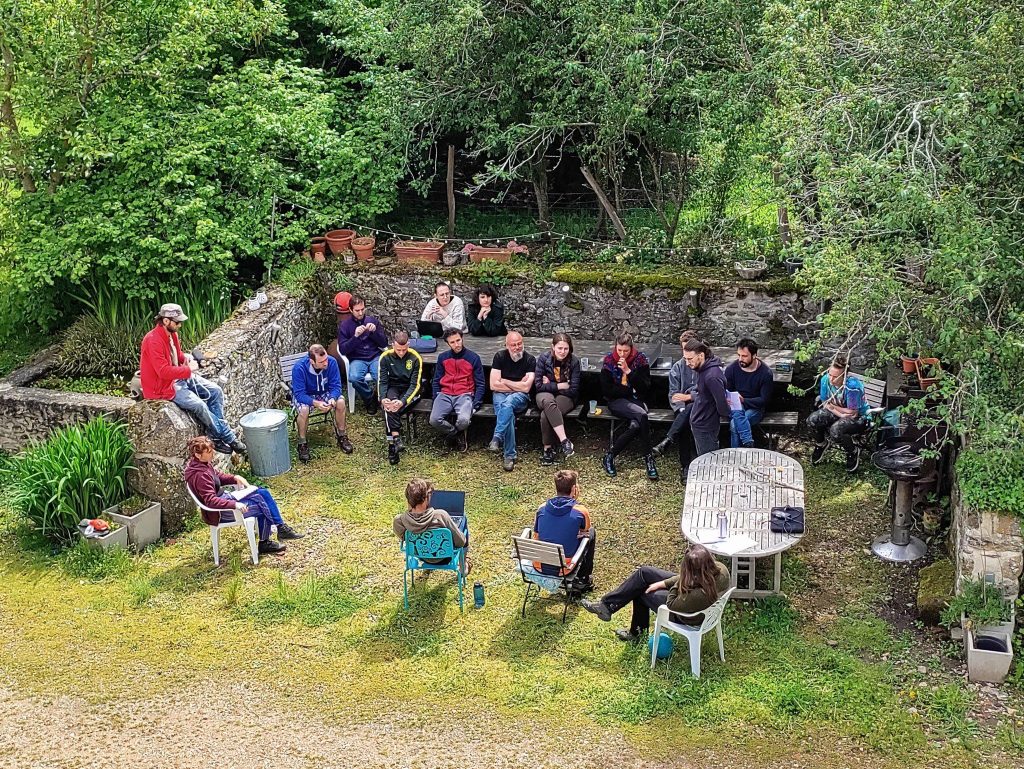
One pinches oneself to believe it, but that is nevertheless ecology according to certain movements which militate in favour of some “energy transition”. By claiming to solve a problem, they aggravate and create others. In France, since the beginning of the 20th century, 67% of wetlands have disappeared, as well as 75% of pollinators. Two hundred species disappear every day in the world, and 92% of large fish have already disappeared, but this is apparently secondary. According to them, the important thing is to secure the energy future of industrial civilization.
If you want to get out of these contradictions, and finally think seriously about how to save what is left of the living on this planet, join Deep Green Resistance.
Featured image by Zac Edmonds on Unsplash All other images in the text are taken by Alec from DGR France.
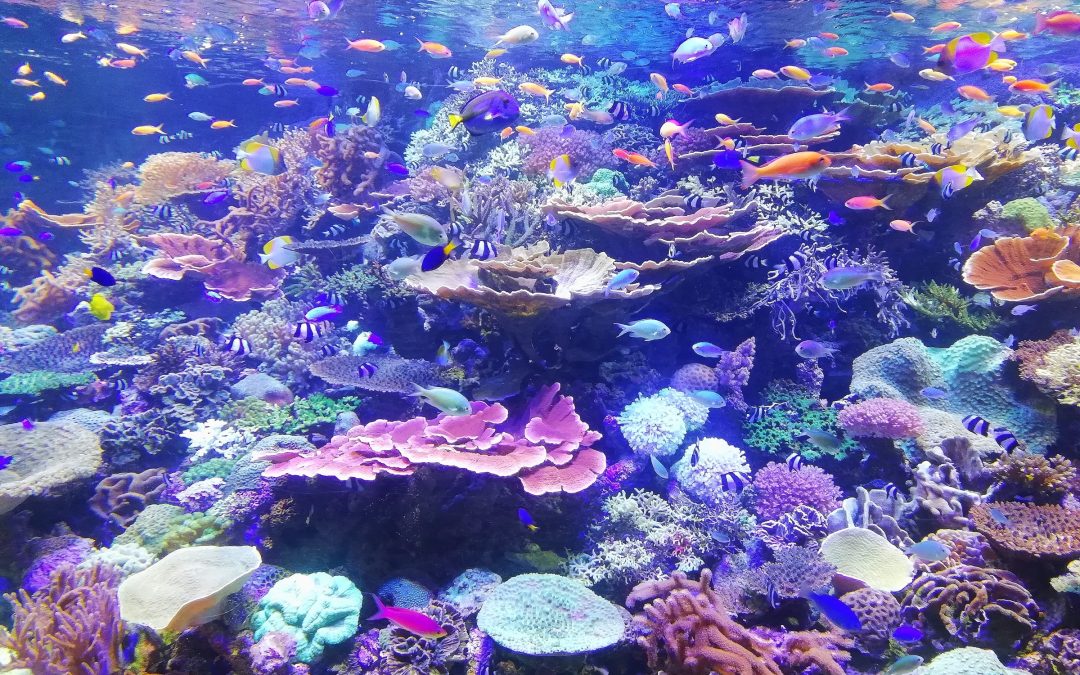
by DGR News Service | Apr 24, 2023 | Biodiversity & Habitat Destruction, Mining & Drilling, NEWS, Toxification
Editor’s Note: Earlier this year, UN delegates reached an agreement on conservation of marine life on international waters. The agreement, reached after two decades of negotiations, claims it will protect 30 percent of the world’s oceans from biodiversity loss by 2030. It has been hailed as a “breakthrough” by Secretary-General António Guterres. Mainstream environmental organizations have followed suit. These two articles by DGR members question these claims. They explore what the treaty actually says. The article is followed by the invitation to a demonstration against Deep Sea Mining in London on May 3 and 4.
The UN High Seas Treaty
By Jolene
Scrolling through a bright green Facebook page a few weeks ago I saw this headline: “More Than 190 Countries Agree On A Treaty to Protect Marine Life.” Sounds good, but is it really? I wonder if anyone who saw that post actually read and researched the story before reacting to it with likes and hearts and enthusiastic comments.
The article said that The United Nations High Seas Treaty aims to protect 30% of the world’s ocean from biodiversity loss by 2030. My first thought was, why only 30%? My second thought was, There’s got to be something more to this treaty than is being told to us in the article. And there is.
First, let’s look at who is allowed to use ocean resources.
Although the ocean body of water can be used by anyone, the ocean seabed belongs to the coastal state, which is 12 nautical miles from the coast. A nautical mile is a little over a land mile. Each state also has an exclusive economic zone which is 200 nautical miles from its coast. A nation has the right to use the resources in this zone. Beyond the 200 nautical miles is considered international waters — the high seas — which can be used by anyone. The new treaty is supposed to regulate the use of international waters.
Right now, all nations are allowed to lay submarine cables and pipelines along the floor bed of the high seas. That seems destructive enough, but now the UN High Seas Treaty, that is supposed to protect marine life, is going to allow deep sea mining to be exempt from environmental impact assessment (EIA) measures.
Deep sea mining is one of the most destructive activities that can be done to the ocean sea bed. The push for this mining is being driven by an increase in demand for minerals to make so-called renewable energy. More and more of the earth’s land is being mined for these minerals, and the mining industry is now looking to the ocean to continue the destruction.
The land and sea should not be owned by anyone, but as we can see, the most powerful people in this industrial society are just taking what they want. Mining destroys land bases, and now deep sea mining is being added to the destruction of the planet. Whenever governments get together to do something “good,” be very skeptical. It’s usually being done for the good of companies, not the planet.

Ocean Waves by Silas Baisch via Unsplash
What they aren’t telling you about the High Seas Treaty
By Julia Barnes
When the High Seas Treaty was announced, conservation groups applauded and social media was abuzz with celebration. The media portrayed it as a long-awaited victory. Commentators claimed that it meant 30% of the ocean would be protected by 2030, that deep sea mining would face strict regulations, and biodiversity would be safeguarded.
The draft text is easily accessible online. It’s a 54-page document, dry and tedious, but clear enough that any lay person should be able to comprehend its meaning.
That is why it is so unforgivable that the treaty has been misrepresented the way it has.
The High Seas Treaty does not guarantee that 30% of the ocean will be protected. It makes no commitment to a percentage, sets no targets. It merely lays out the regulatory framework under which it would be possible to create marine protected areas on the high seas.
When you think of a protected area, you’re likely imagining a place that is off limits to exploitation, where industrial activities are banned.
Under the High Seas Treaty, a protected area is one that is “managed” and “may allow, where appropriate, sustainable use provided it is consistent with the conservation objectives.”
I do not believe that humans possess the wisdom to manage the ocean, nor would we ever be capable of doing a better job than the ocean does itself, with its billions of years of intelligence.
Our track record with managing fisheries should cast serious doubts about our ability to assess sustainability. We must remember that there is no surplus in nature. When something is taken out, even at a rate that is “sustainable,” nutrients are permanently removed from the ecosystem. This cannot happen without consequences.
Even though “protected” might not mean what we expect it to, let’s assume for a moment that an area managed for “sustainable use” is in better shape than one left “unprotected.” Next, we run into the problem of enforcement.
Illegal fishing is rampant, with 40% of fishing boats in the world operating illegally. Marine protected areas are routine victims of poaching. Unless they deploy a navy to patrol the protected areas on the high seas, it is likely these will only be paper parks.
But all this presumes that marine protected areas will, in fact, be created. The process laid out in the treaty makes this quite difficult. With 193 signatory countries, decisions on the creation of marine protected areas are by consensus, and failing that, will require a two-thirds majority vote.
Proposals for new marine protected areas must undergo a review by a scientific and technical body, then consultation with “all relevant stakeholders,” after which the submitting party will be asked to revise the proposal.
Next, there is a 120-day review period. If another party objects to the establishment of a marine protected area within that time frame, the objecting party will be exempted from the marine protected area.
The review period also leaves time for industries to exploit the proposed area before protection is in place. We’ve seen this happen on land when logging companies targeted soon-to-be-protected forests, cutting as many trees as they could before the protection was granted. It’s not hard to imagine something similar taking place on the high seas, with a proposed area being fished intensively during the 120-day period.
What commentators often ignore is that a large portion of the treaty is dedicated to something called “marine genetic resources” and deals with how to share the “benefits” gained from commodifying the genetic material of marine organisms for use in things like pharmaceuticals.
Conservation groups have falsely claimed that the High Seas Treaty puts limits on deep sea mining, when in fact it does not. Deep sea mining is even exempted from environmental impact assessment measures.
The High Seas Treaty may have been a diplomatic feat, but as is often the case when negotiating with so many parties, to achieve agreement, the text ends up watered down and toothless.
This comes as no surprise. What is disheartening is seeing the way news media and NGOs consistently misrepresent the treaty. For a while, the internet exploded with erroneous claims that 30% protection had been achieved, that the ocean had scored a massive victory.
Meanwhile, the deep sea mining industry is gearing up to begin the largest and most destructive project ever imagined on the high seas, and few people have heard of it.
We have an illusion of protection masking a new era of exploitation.
Demonstration: Say No to Deep Sea Mining!
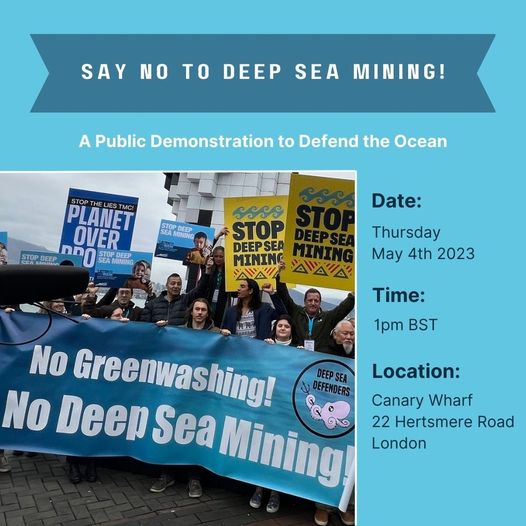
The International Forum for Deep Sea Mining Professionals will be holding their 11th Annual Deep Sea Mining Summit 2023 in London on May 3rd and 4th.
They have been very secretive about the exact location. Which is understandable considering the destructive nature of this profession. But we have found out where it will be held and we need to have an opposition demonstration there. Everyone and anyone in and around London who is against mining the deep sea should come with signs and solidarity. We have set a time and date to show up but feel free to come express your views anytime during the summit. On May 4th at 1pm BST in front of the London Marriott Hotel Canary Wharf 22 Hertsmere Road defend the deep sea!
Species extinction is considered a “likely outcome” of deep sea mining. This new extractive industry threatens not only the fragile seabed, but all levels of the ocean. Mining would produce plumes of sediment wastewater that spread for 100s of kilometers, suffocating the fish who swim throught them.
We have an opportunity to stop this industry before it begins, but we are running out of time. As soon as this July, commercial mining may begin, opening an area of the ocean as wide as North America to exploitation.
We want to show that there is widespread support for a ban on deep sea mining.
We also want to highlight the incredible biodiversity that is threatened, so we are encouraging people to come dressed as their favorite ocean creatures. Don’t let them think your silence means consent.
The Facebook page for this event is here.
Sponsored by Deep Sea Defenders
Featured Image: Life in the ocean by SGR via Unsplash

by DGR News Service | Apr 21, 2023 | ANALYSIS, Biodiversity & Habitat Destruction, Climate Change, Mining & Drilling
Editor’s Note: Mainstream environmental organizations propose electric vehicles (EVs) as a solution to every environmental crisis. It is not only untrue, but a delusion. It does not matter to the hundreds of lives lost whether they were killed for extraction of fossil fuel for traditional internal combustion (IC) cars, or for extraction of materials necessary for manufacturing EVs. What matters is that they are dead, never to come back, and that they died so a portion of humans could have convenient mobility. DGR is organizing to oppose car culture: both IC and EVs.
By Benja Weller
I am a rich white man in the richest time, in one of the richest countries in the world (…)
Equality does not exist. You yourself are the only thing that is taken into account.
If people realized that, we’d all have a lot more fun.
ZDF series Exit, 2022, financial manager in Oslo,
who illegally traded in salmon
Wir fahr’n fahr’n fahr’n auf der Autobahn
Vor uns liegt ein weites Tal
Die Sonne scheint mit Glitzerstrahl
(We drive drive drive on the highway
Ahead of us lies a wide valley
The sun shines with a glittering beam)
Kraftwerk, Single Autobahn / Morgenspaziergang, 1974
Driving a car is a convenient thing, especially if you live in the countryside. For the first time in my life I drive a car regularly, after 27 years of being “carless”, since it was left to me as a passenger. It’s a small Suzuki Celerio, which I call Celery, and fortunately it doesn’t consume much. Nevertheless, I feel guilty because I know how disturbing the engine noise and exhaust fumes are for all living creatures when I press the gas pedal.
So far, I have managed well by train, bus and bicycle and have saved a lot of money. As a photographer, I used to take the train, then a taxi to my final destination in the village and got to my appointments on time. Today, setting off spontaneously and driving into the unknown feels luxurious.
However, my new sense of freedom is in stark contrast to my understanding of an intact environment: clean air, pedestrians and bicyclists are our role models, children can play safely outside. A naive utopia? According to the advertising images of the car industry, it seems as if electric cars are the long-awaited solution: A meadow with wind turbines painted on an electric car makes you think everything will be fine.
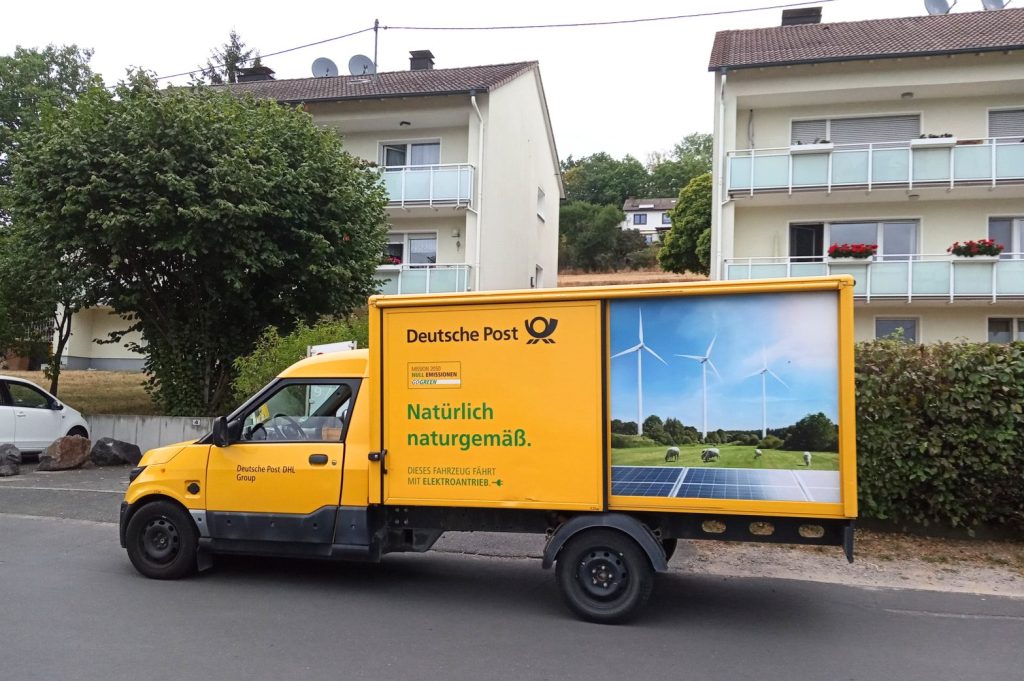
“Naturally by it’s very nature.” says the writing on an EV of the German Post, Neunkirchen, Siegerland (Photo by Benja Weller)
In Germany, the car culture (or rather the car cult) rules over our lives so much that not even a speed limit on highways can be achieved. The car industry has been receiving subsidies from the government for decades and journalists are ridiculed when they write about subsidies for cargo bikes.
Right now, this industry is getting a green makeover: quiet electric cars that don’t emit bad air and are “CO2 neutral” are supposed to drive us and subsequent generations into an environmentally friendly, economically strong future. On Feb. 15, 2023, the green party Die Grünen published in its blog that the European Union will phase out the internal combustion engine by 2035: “With the approval of the EU Parliament on Feb. 14, 2023, the transformation of the European automotive industry will receive a reliable framework. All major car manufacturers are already firmly committed to a future with battery-electric drives. The industry now has legal and planning certainty for further investment decisions, for example in setting up its own battery production. The drive turnaround toward climate-friendly vehicles will create future-proof jobs in Europe.”
That’s good news – of course for the automotive industry. All the old cars that will be replaced with new ones by 2035 will bring in more profit than old cars that will be driven until they expire. That the EU along with the car producers, are becoming environmentalists out of the blue is hard to believe, especially when you see what cars drive on German roads.
In recent years, a rather opulent trend became apparent: cars with combustion engines became huge in size and gasoline consumption increased, all in times of ecological collapse and global warming. These oversized SUVs are actually called sport-utility vehicles, even if you only drive them to get beer at the gas station. Small electric cars seem comfortable enough and have a better environmental footprint than larger SUVs. But the automotive industry is not going to let the new electromobility business go to waste that easily and is offering expensive electric SUVs: The Mercedes EQB 350 4matic, for example, which weighs 2.175 tons and has a 291-hp engine, costs €59,000 without deducting the e-car premium.
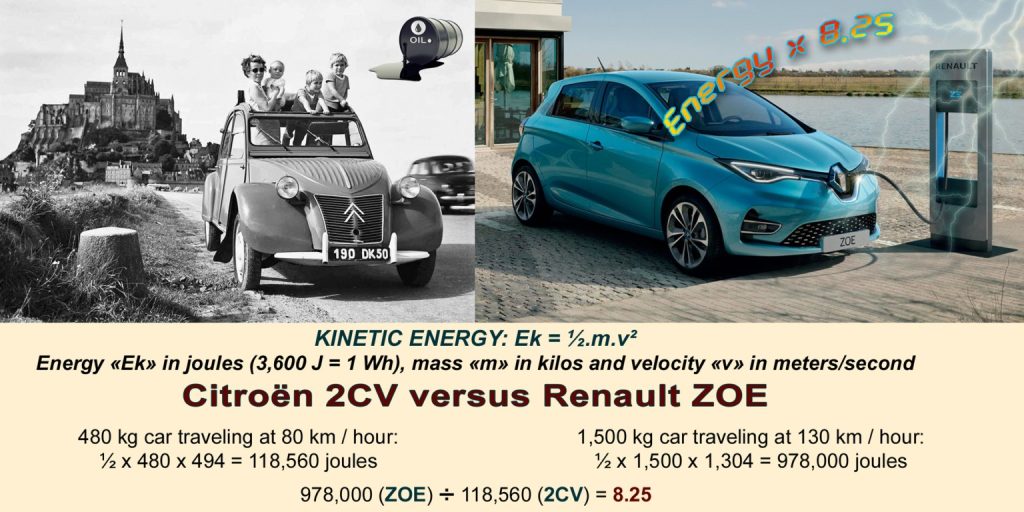
Comparing the Citroen 2CV and the Renault Zoe electric car shows that the Zoe uses about 8 times more kinetic energy. (Graph by Frederic Moreau)
If we look at all the production phases of a car and not just classify it according to its CO2 emmissions, the negative impact of the degradation of all the raw materials needed to build the car becomes visible. This is illustrated by the concept of ecological backpack, invented by Friedrich Schmidt-Bleek, former head of the Material Flows and Structural Change Department at the Wuppertal Institute for Climate, Environment and Energy. On the Wuppertal Institute’s website, one can read that “for driving a car, not only the car itself and the gasoline consumption are counted, but also proportionally, for example, the iron ore mine, the steel mill and the road network.”
“In general, mining, the processing of ores and their transport are among the causes of the most serious regional environmental problems. Each ton of metal carries an ecological backpack of many tons, which are mined as ore, contaminated and consumed as process water, and weigh in as material turnover of the various means of transport,” the Klett-Verlag points out.
Car production requires large quantities of steel, rubber, plastic, glass and rare earths. Roads and infrastructure suitable for cars and trucks must be built from concrete, metal and tar. Electric cars, even if they do not emit CO2 from the exhaust, are no exception. Added to this is the battery, for which electricity is needed that is generated at great material expense, a never-ending cycle of raw material extraction, raw material consumption and waste production.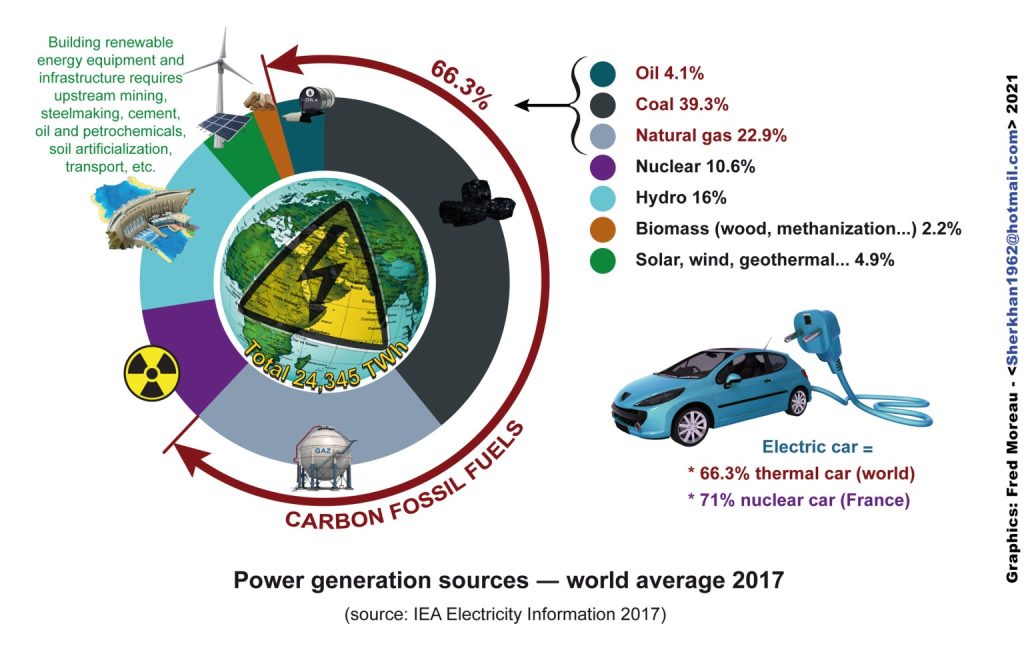
Power generation sources for electric vehicles (Graph by Frederic Moreau)
Lithium is a component of batteries needed for electric cars. For the production of these batteries and electric motors, raw materials are used “that are in any case finite, in many cases already available today with limited reserves, and whose extraction is very often associated with environmental destruction, child labor and overexploitation,” as Winfried Wolf writes in his book Mit dem Elektroauto in die Sackgasse, Warum E-Mobilität den Klimawandel beschleunigt (With the electric vehicle into the impasse, why e-mobility hastens climate change).
What happens behind the scenes of electric mobility, which is touted as “green,” can be seen in the U.S. campaign Protect Thacker Pass. In northern Nevada, a state in the western U.S., resistance is stirring against the construction of an open-pit mine by the Canadian company Lithium Americas, where lithium is to be mined. Here, a small group of activists, indigenous peoples and local residents have united to raise awareness of the destructive effects of lithium mining for electric car batteries and to prevent the lithium mine in the long term with the Protect Thacker Pass campaign.
Thacker Pass is a desert area (also called Peehee muh’huh in the native language of the Northern Paiute) that was originally home to the indigenous peoples of the Northern Paiute, Western Shoshone, and Winnemuca Tribes. The barren landscape is still home to some 300 species of animals and plants, including the endangered Kings River pyrg freshwater snail, jack rabbit, coyote, bighorn sheep, golden eagle, sage grouse, and pronghorn, and is home to large areas of sage brush on which the sage grouse feeds 70-75% of the time, and the endangered Crosby’s buckwheat.
For Lithium Americas, Thacker Pass is “one of the largest known lithium resources in the United States.” The Open-pit mining would break ground on a cultural memorial commemorating two massacres perpetrated against indigenous peoples in the 19th century and before. Evidence of a rich historical heritage is brought there by adjacent caves with burial sites, finds of obsidian processing, and 15,000-year-old petroglyphs. For generations, this site has been used by the Northern Paiute and Western Shoshone tribes for ceremonies, traditional gathering and hunting, and educating young Native people. Now it appears that the history of the colonization of Thacker Pass is repeating itself.
According to research by environmental activists, the lithium mine would lower the water table by 10 meters in one of the driest areas in the U.S., as it is expected to use 6.4 billion gallons of water per year for the next 40 years. This would be certain death for the Kings River pyrg freshwater snail. Mining one ton of lithium generally consumes 1.9 million liters of water at a time when there is a global water shortage.
The mine would discharge uranium, antimony, sulfuric acid and other hazardous substances into the groundwater. This would be a major threat to animal and plant species and also to the local population. Their CO2 emissions would come up to more than 150,000 tons per year, about 2.3 tons of CO2 for every ton of lithium produced. So much for CO2-neutral production! Thanks to a multi-billion dollar advertising industry, mining projects are promoted as sustainable with clever phrases like “clean energy” and “green technology”.
About half of the local indigenous inhabitants are against the lithium mine. The other half are in favor of the project, hoping for a way out of financial hardship through better job opportunities. Lithium Americas’ announcement that it will bring an economic boost to the region sounds promising when you look at the job market there. But there’s no guarantee that working conditions will be fair and jobs will be payed well. According to Derrick Jensen, jobs in the mining industry are highly exploitative and comparable to conditions in slavery.
Oro Verde, The Tropical Forest Foundation, explains: “With the arrival of mining activities, local social structures are also changing: medium-term social consequences include alcohol and drug problems in the mining regions, rape and prostitution, as well as school dropouts and a shift in career choices among the younger generation. Traditional professions or (subsistence) agriculture are no longer of interest to young people. Young men in particular smell big money in the mines, so school dropouts near mines are also very common.”
Seemingly paradoxically, modern industrial culture promotes a rural exodus, which in turn serves as an argument for the construction of mines that harm the environment and people. Indigenous peoples have known for millennia how to be locally self-sufficient and feed their families independently of food imports. This autonomy is being repeatedly snatched away from them.
Erik Molvar, wildlife biologist and chair of the Western Watersheds Project, says of the negative impacts of lithium mining in Thacker Pass that “We have a responsibility as a society to avoid wreaking ecological havoc as we transition to renewable technologies. If we exacerbate the biodiversity crisis in a sloppy rush to solve the climate crisis, we risk turning the Earth into a barren, lifeless ball that can no longer sustain our own species, let alone the complex and delicate web of other plants and animals with which we share this planet.”
We share this planet with nonhuman animal athletes: The jack rabbit has a size of about 50cm (1.6 feet), can reach a speed of up to 60 km/h (37mph) and jump up to six meters (19.7 feet) high from a standing position. In the home of the jack rabbit, 25% of the world’s lithium deposits are about to be mined. To produce one ton of lithium, between 110 and 500 tons of earth have to be moved per day. Since lithium is only present in the clay rock in a proportion of 0.2-0.9%, it is dissolved out of the clay rock with the help of sulfuric acid.
According to the Environmental Impact Statement from the Thacker Pass Mine (EIS), approximately 75 trucks are expected to transport the required sulfur each day to convert it to sulfuric acid in a production facility built on site. This means that 5800 tons of sulfuric acid would be left as toxic waste per day. Sulfur is a waste product of the oil industry. How convenient, then, that the oil industry can simply continue to do “business as usual.”
Nevada Lithium, another company that operates lithium mines in Nevada states: “Electric vehicles (EVs) are here. The production of lithium for the batteries they use is one of the newest and most important industries in the world. China currently dominates the market, and the rest of the world, including the U.S., is now responding to secure its lithium supply.” The demand for lithium is causing its prices to skyrocket: Since the demand for lithium for the new technologies is high and the profit margin is 46% according to Spiegel, every land available will be used to mine lithium.
Lithium production worldwide would have to increase by 400% to meet the growing demand. With this insane growth rate as a goal, Lithium Americas has begun initial construction at Thacker Pass on March 02, 2023. But environmentalists are not giving up, they are holding meetings, educating people about the destructive effects of lithium mining, and taking legal action against the construction of the mine.
Let’s take a look at the production of German electric cars.
Meanwhile, this is the third attempt to bring electric cars to the market in Germany. In the early 20th century, Henry Ford’s internal combustion engine cars replaced electric-powered cars on the roads.

Graph by Frederic Moreau
“In fact, three decades ago, there were similar debates about the electric car as today. In 1991, various models of electric vehicles were produced in Germany and Switzerland,” writes Winfried Wolf. “At that time, it was firmly assumed that the leading car companies would enter into the construction of electric cars on a large scale.”
He goes on to write about a four-year test on the island of Rügen that tested 60 electric cars, including models by VW, Opel, BMW and Daimler-Benz passenger cars from 1992 to 1996. The cost was 60 million Deutsche Mark. The Institute for Energy and Environmental Research (IFEU) in Heidelberg, commissioned by the Federal Ministry of Research, concluded that electric cars consume between 50 percent (frequent drivers) and 400 percent more primary energy per kilometer than comparable cars with internal combustion engines. The test report states that the Federal Environment Agency (UBA) in Berlin also sees its rejection of the electric car strategy confirmed.
There is no talk of these test results in times of our current economic crisis: also German landscapes and its water bodies must make way for a “green” economic policy. We can see the destructive effects of electric car production centers in the example of Grünheide, a town in Brandenburg 30 km from Berlin.
Manu Hoyer, together with other environmentalists in the Grünheide Citizens’ Initiative, rebel against the man who wants to discover life on other planets because the Earth is not enough: Elon Musk. She explains in an article by Frank Brunner in the magazine Natur how Tesla proceeded to build the Gigafactory Berlin-Brandenburg with supposedly 12,000 employees: First, they deforested before there was even a permit, and when it was clear that the electric car factory would be built, Tesla planted new little trees elsewhere as compensation.
The neutral word “deforestation” does not explain the cruel process behind it: Wildlife have their habitat in trees, shrubs and in burrows deep in the earth. In the Natur article, Manu Hoyer recalls that the sky darkened “with ravens waiting to devour the dead animals among the felled trees.”
In the book The Day the World Stops Shopping, J.B. MacKinnon describes, based on a study of clearing in Australia, that the scientific consensus is that the majority, and in some cases all, of the individuals living at a site will die when the vegetation disappears.
It doesn’t sound pretty, but it’s the reality when you read that animals are “crushed, impaled, mauled or buried alive, among other things. They suffer internal bleeding, broken bones or flee into the street where they are run over.” Many would stubbornly resist giving up their habitat.
In this, they are like humans. Nobody gives up her piece of land or his house without a fight when it is taken away from him; animals and humans both love the good life. But the conditions of wild animals play no role in our civil society, they should be available anytime to be exlpoited for our needs.
In order not to incite nature lovers, legal regulations are supposed to lull them into the belief that what is happening here is morally right. Behind this is a calculus by the large corporations, which in return for symbolic gestures can continue the terror against nature blamelessly.
In December 2022, Tesla was granted permission to buy another 100 hectares of forest to expand the car factory site to 400 hectares. The entire site had long been available for new industrial projects, although it is also a drinking water protection area. The Gigafactory uses 1.4 million cubic meters of water annually in a federate state plagued by drought.
Manu Hoyer tells Deutschlandfunk radio that dangerous chemicals are said to have leaked only recently and contaminated firefighting water seeped into the groundwater during a fire last fall. Another environmentalist, Steffen Schorcht, who studied biocybernetics and medical technology, criticizes local politicians for their lethargy in the face of environmental destruction. He sees no other way to fight back than to join forces with other citizens and international organizations outside of politics.
The beneficiaries are not the people who make up the bulk of the population. Tesla cars go to drivers who are happy to spend 57,000€ for a car with a maximum of 535 horsepower.
I can still remember how, as a child, I used to drive with my parents on vacation to the south of France, Italy or Austria in the Citroën 2CV model (two horsepower). Such a car trip was more adventure than luxury, but the experiences during the simple camping vacations in Europe’s nature have remained formative childhood memories.
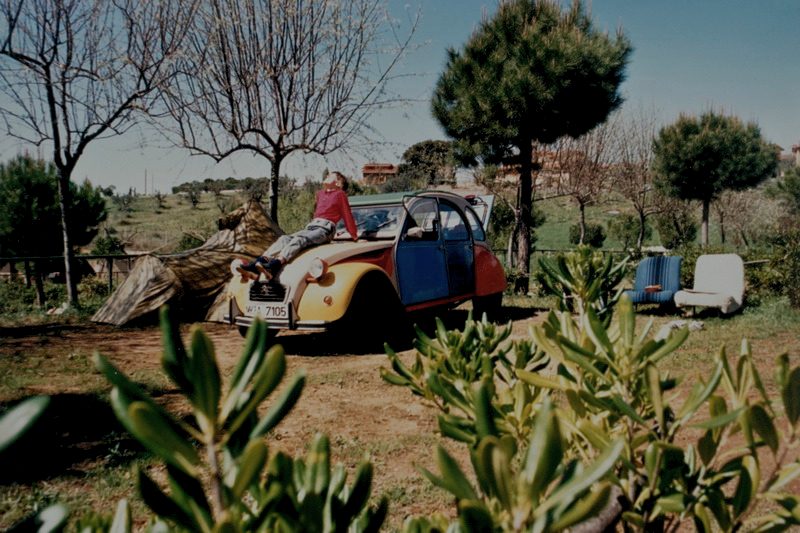
The author sitting on the hood of a Citroën 2CV in Tuscany, Italy, 1989 (Photo: private)
Today, we have to go a big step further than just living a “simple life” individually. The car industry is pressing the gas pedal, taking the steering wheel out of our hands and driving us into the ditch. It’s time to get out, move our feet and stand up against the car industry.
The BDI, Federation of German Industries, writes in its 2017 position paper on the interlocking of raw materials and trade policy in relation to the technologies of the future that without raw materials there would be no digitalization, no Industry 4.0 and no electromobility. This statement confirms that our western lifestyle can only be financed through the destruction of the last natural habitats on Earth.
The mining of lithium and other so-called “raw materials” for new technologies is related to our culture, which imposes a techno-dystopia on the functioning organism Earth, that nullifies all biological facts. If we want to save the world, it seems to me, we should not become lobbyists for the electric car industry. Rather, we should organize collectively, learn from indigenous peoples, defend the water, the air, the soil, the plants, the wildlife, and everyone we love. The brave environmentalists in Grünheide and Thacker Pass are showing us how.
Homo sapiens have done well without cars for 200,000 years and will continue to do so. All we need is the confidence that our feet will carry us.
Wir fahr’n fahr’n fahr’n auf der Autobahn, Kraftwerk buzzed at the time
as an ode to driving a car
I glide over the asphalt to the points in lonely nature,
give myself a time-out from the confines of the small town
Bus schedules in German villages are an old joke
Buy me a Mercedes Benz, cried Janis Joplin devotedly,
without an expensive car, life is only half as valuable
Car-free Sundays during the oil crisis as a nostalgic anecdote
Driving means freedom and compulsion at the same time, asphalt is forced upon topsoil
with millions of living beings per tablespoon of earth
You must go everywhere: To the supermarket, to school, to work, to the store,
to the club, to friends, and to the trail park
Be yourself! they tell you, but without a car you’re not yourself,
on foot with a lower social status than on wheels
The speed limit dismissed each time, which party stands for the wild nature,
our ancient living room? Don’t vote for them, they deceive too
Believe yourself! they say, but what else can you believe, grown up believing
that this civilization is the only right one
Drive, drive, drive and the airstream flies in your hair –
Freedom, the one moment you have left
Featured image: A view of Thacker Pass by Max Wilbert

by DGR News Service | Feb 10, 2023 | ACTION, Mining & Drilling, Obstruction & Occupation
Editor’s Note: Due to their early adoption of renewables, Germany has been hailed as an example by mainstream environmentalists. The myth that Germany is cutting back on fossil fuel has already been debunked in Bright Green Lies. With their main supplier of fossil fuel going to war with Ukraine, Germany is facing a crisis. They are vying for alternate sources, which they have found under their own soil in Lützerath. They are trying to evacuate a hundred villages to get coal under their ground. In a brave attempt to defend their land, the people are putting up a fight against the German state.
Today’s post consists of three separate pieces. The first is a Common Dreams piece covering police brutality against the local communities. The second is a firsthand account of one of those many protestors who joined the local villagers in fighting the German state. This account explores the need for training and militant resistance to industrial civilization. The post finally culminates in an excerpt from Derrick Jensen’s Endgame.
Disclaimer: The opinions expressed are those of the author and do not necessarily reflect those of Deep Green Resistance, the News Service or its staff.
“The most affected people are clear, the science is clear, we need to keep the carbon in the ground,” said Greta Thunberg at the protest.
By Julia Conley / CommonDreams
The way was cleared for the complete demolition of the German village of Lützerath and the expansion of a coal mine on Monday after the last two anti-coal campaigners taking part in a dayslong standoff with authorities left the protest site.
The two activists—identified in media reports by their nicknames, “Pinky” and “Brain”—spent several days in a tunnel they’d dug themselves as thousands of people rallied in the rain over the weekend and hundreds occupied the village, which has been depopulated over the last decade following a constitutional court ruling in favor of expanding a nearby coal mine owned by energy firm RWE.
As Pinky and Brain left the 13-foot deep tunnel, which police in recent days have warned could collapse on them contrary to assessments by experts, other campaigners chainedthemselves to a digger and suspended themselves from a bridge to block access to Lützerath, but those demonstrations were also halted after several hours.
Protesters and their supporters have condemned the actions of law enforcement authorities in the past week as police have violently removed people from the site, including an encampment where about 100 campaigners have lived for more than two years to protest the expansion of RWE’s Garzweiler coal mine.
The vast majority of protesters were peaceful during the occupation. German Interior Minister Nancy Fraeser said Monday that claims of police violence would be investigated while also threatening demonstrators with prosecution if they were found to have attacked officers.
“If the allegations are confirmed then there must be consequences,” said Fraeser.
Fridays for Future leader Greta Thunberg joined the demonstrators last week, condemning the government deal with RWE that allowed the destruction of Lützerath as “shameful” before she was also forcibly removed from the site on Sunday.
“Germany is really embarrassing itself right now,” Thunberg said Saturday of the plan to move forward with the demolition of the village, as thousands of people joined the demonstration. “I think it’s absolutely absurd that this is happening the year 2023. The most affected people are clear, the science is clear, we need to keep the carbon in the ground.”
“When governments and corporations are acting like this, are actively destroying the environment, putting countless of people at risk, the people step up,” she added.
Campaigners have warned that the expansion of the Garzweiler coal mine will make it impossible for Germany to meet its obligation to reduce carbon emissions and have condemned the government, including the Green Party, for its agreement with RWE. Under the deal, the deadline for coal extraction in Germany was set at 2030.
RWE’s mine currently produces 25 million tonnes of lignite, also known as brown coal, per year.
Extinction Rebellion demonstrators in the Netherlands said last week that the protest in the village “is not so much about preserving Lützerath itself.”
“It symbolizes resistance to everything that has to make way for fossil energy while humanity is already on the edge of the abyss due to CO2 emissions,” said the group.
“The people in power will not disappear voluntarily; giving flowers to the cops just isn’t going to work. This thinking is fostered by the establishment; they like nothing better than love and nonviolence. The only way I like to see cops given flowers is in a flower pot from a high window.” — William S. Burroughs
By Agent Eagle
I
Thousands of people storming a village occupied by police. It was not the revolution, but it was close.
A demonstration had been announced for January 14, a Saturday, in Keyenberg, which is next to Lützerath, Germany. Underneath the villages and their fertile loess soil lies lignite. The German government, the world’s number one lignite miner with 140 million tons extracted a year, dispossessed the residents of approximately 100 villages around the strip mine Garzweiler 2 utilizing laws from Nazi Germany. The police occupy and defend the area that is now in the possession of the energy firm RWE from the people.
Despite attempts at forced evacuation, a couple of activists were still holding out in Lützerath, underground or in the trees. However, since the police had disbanded their community kitchen and thrown out all paramedics, their time was running out.
Therefore, on Saturday, we knew we would make a last attempt at reoccupying the village.
The weather was stormy, which was an advantage in the end because it disabled armored water cannon trucks. The mud was sticky. The rain was heavy. There were police around the entire village, police along the horizon, police as far as the eye can see. Yet thousands of people marched to Lützerath despite the police doing everything they could to prevent us from doing so by using tear gas, batons, riot shields, dogs, horses, anti-riot water cannons, a helicopter and military tactics. It was a siege that began when one of the people organizing the legal demo told us to ignore the police and go for the village.
A group of hooded activists in black marched right through the police lines, throwing smoke bombs and shooting fireworks. Of around 35,000 people, approximately 5,000-10,000 joined in, but we progressively kept losing more on the way to Lützerath. We advanced by taking land and by breaking through police lines, for example by distracting the police, so we could push through elsewhere. Then the police rearranged and it all began anew. It took 6-7 hours to even get to the village.
By then it was almost dawn. Most of the people were deciding to turn around.
The police managed to surround the entire village. They had erected two special fences around the village and the surrounding woods. They had also built a road through the strip mine, so they could bring in ordnance while they prevented all of our vehicles from getting through.
***
II
Lützerath leaves an impression. A mark on the consciousness of the people. Some are confronted with the violence of the machine for the very first time. The lifeless bodies of protestants being dragged through the mud by policemen. Running and panicked screams. A heavily armed policeman coming at you, swinging his baton, bellowing, hitting you in the face, despite you raising your arms. In such a moment you become fully conscious of the absurdity and brutality of a system that does not protect you but the interests of a company tearing the life from this very earth. You notice you do not have a weapon because somebody told you that you were prohibited from carrying one. But he does, and he is using it.
You also see the people coming together to lift a woman in a wheelchair over an earth wall. You see the crowd forming a protective circle, shouting and pulling on a policeman who is pushing a screaming woman. I felt something very special that is hard to describe. A solidarity that does not need words.
***
III
Over a hundred people were hurt, some severely. The police won, the area was evacuated and flattened in the cruelest way possible. Landmarks that were supposed to go to museums were destroyed. Still, some people are holding out to slow down the monstrous rotary excavator. If RWE manages to mine just one quarter of the amount of lignite it plans to mine, if Lützerath falls, the earth will warm more than 1.5°.
The reason we failed in the end was not hunger. Nor exhaustion. Nor lack of equipment. The reason we failed was morale. Morale was, of course, low from hours of wading through mud and static battles with the police, but people can push through hardships and overcome fear. For this, they need motivation. That could look like a leader giving them a goal and pointing them in the right direction, or knowing that reinforcement is on the way.
What we would have needed was a detailed plan, experience and more structure. A tighter, more responsive form of organization led by people with an iron will. Numbers can only do so much. If he has a weapon, and is willing to use it, and you do not have a weapon and you are not willing to take risks, then he wins. More militant activists led the push, and most of them were carried off by police fairly early on.
I believe the “activisti,” as they are called here, would have profited from training. For example, many people were too timid to effectively advance, so what would have helped is a kind of military structure with leaders and strategically positioned militant activists.
If we could do it again, I would make sure we would have brought the right equipment along and that the people who knew how to carry and use it were protected until arriving at the fence. In Germany, you are not allowed to bring “protective weapons” to demonstrations, meaning any kind of armor to protect you from police violence. I would have disregarded that. In the deciding moment of this battle, right before the fence, I would have given people shields and armor that a group would have carried up until then and I would have told them to shield the people breaking into the fence.
I would have brought smoke grenades, balloons and water guns filled with colorful paint and pepper spray and maybe even a truck with a hose mounted on top to send the police into chaos. We could have made a coordinated effort to storm into their rows and to disarm them, put bags over their heads, use the pepper spray, colors and flash grenades to blind them and tie them up.
We could have notified people of our plans without alerting police via messenger groups.
We could have driven a truck into the outer fence, maybe put wooden planks over the gap between the fences and climbed over it.
We could have used drones to scout and carrier drones to bring supplies.
We could have stormed the perimeter and disabled or even taken over the water cannon truck.
In the ensuing confusion we could have brought in material for barricades. The fences would have worked to our advantage: we would have barricaded ourselves inside and around it. At night, we would have laid down bricks and spikes to keep the police from bringing in reinforcements. We could have sabotaged the police cars that were already there — it is easy to pop their tires. Or we could have taken them, crashed them and used them for the barricades. People in the very densely populated Ruhrgebiet could have sabotaged police stations and laid fires the whole night to keep the police busy. We could have held our position until morning.
For all of this, we would have needed high amounts of coordination and structure and also morale to keep it coming. Everyone would have needed to lose their fear of state violence and to fight till the bitter end.
Agent Eagle is a German radical feminist and an environmental activist.
By Derrick Jensen/Endgame
“Some failures to act at the right time with the right tactic (violent or nonviolent) may set movements back or move them forward. The trick is knowing when and how to act. Well, that’s the first trick. The real trick is kicking aside our fear and acting on what we already know (because, truly, we depend on those around us, and they are dying because they depend on us, too).
I asked a friend what he thought is meant by the phrase, ‘Every act of violence sets back the movement ten years.’
He responded, ‘More often than not, before I say anything radical or militant at all in any sort of public forum, I wonder who is taking in my words. And I wonder what will be the consequences if I say something that may threaten the worldview of those in power.’
He paused, then continued, ‘I think identity has a lot to do with resistance to violent acts. It’s pretty apparent to us all at a very early age that you’re absolutely forbidden by the master to use the ‘tools of the master to destroy the master’s house.’ Imagine a child who is routinely beaten with a two-by-four, who one day picks it up and fights back. Imagine especially what happens to this child if he’s not yet big enough to effectively fight back, to win. Not good. On the larger scale I don’t think many people are willing to identify themselves with these types of acts or with anyone willing to commit these types of acts simply because it is forbidden by those in power and therefore to be feared.’
Another short pause, and then he concluded, ‘The way I see it, the phrase about setting the movement back is coming from a place of fear. It surely can’t be coming from the perspective of successful pacifist resistance to the machine. If it did, we wouldn’t be here discussing how to stop the atrocities committed by this culture.’
Near the end of our book Welcome to the Machine: Science, Surveillance, and the Culture of Control, George Draffan and I wrote, ‘A high-ranking security chief from South Africa’s apartheid regime later told an interviewer what had been his greatest fear about the rebel group African National Congress (ANC). He had not so much feared the ANC’s acts of sabotage or violence — even when these were costly to the rulers — as he had feared that the ANC would convince too many of the oppressed majority of Africans to disregard ‘law and order.’ Even the most powerful and highly trained ‘security forces’ in the world would not, he said, have been able to stem that threat.’
As soon as we come to see that the edicts of those in power are no more than the edicts of those in power, that they carry no inherent moral or ethical weight, we become the free human beings we were born to be, capable of saying yes and capable of saying no.”
Endgame, Derrick Jensen
Photo by Markus Spiske on Unsplash















